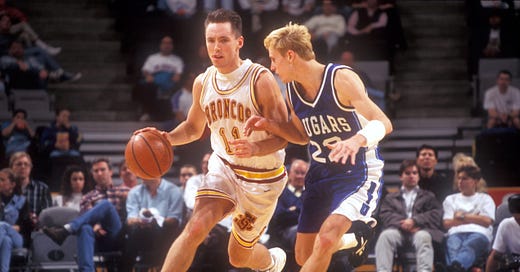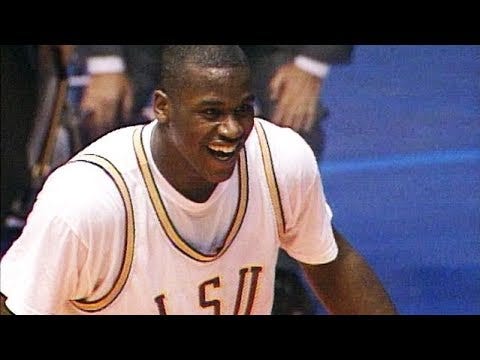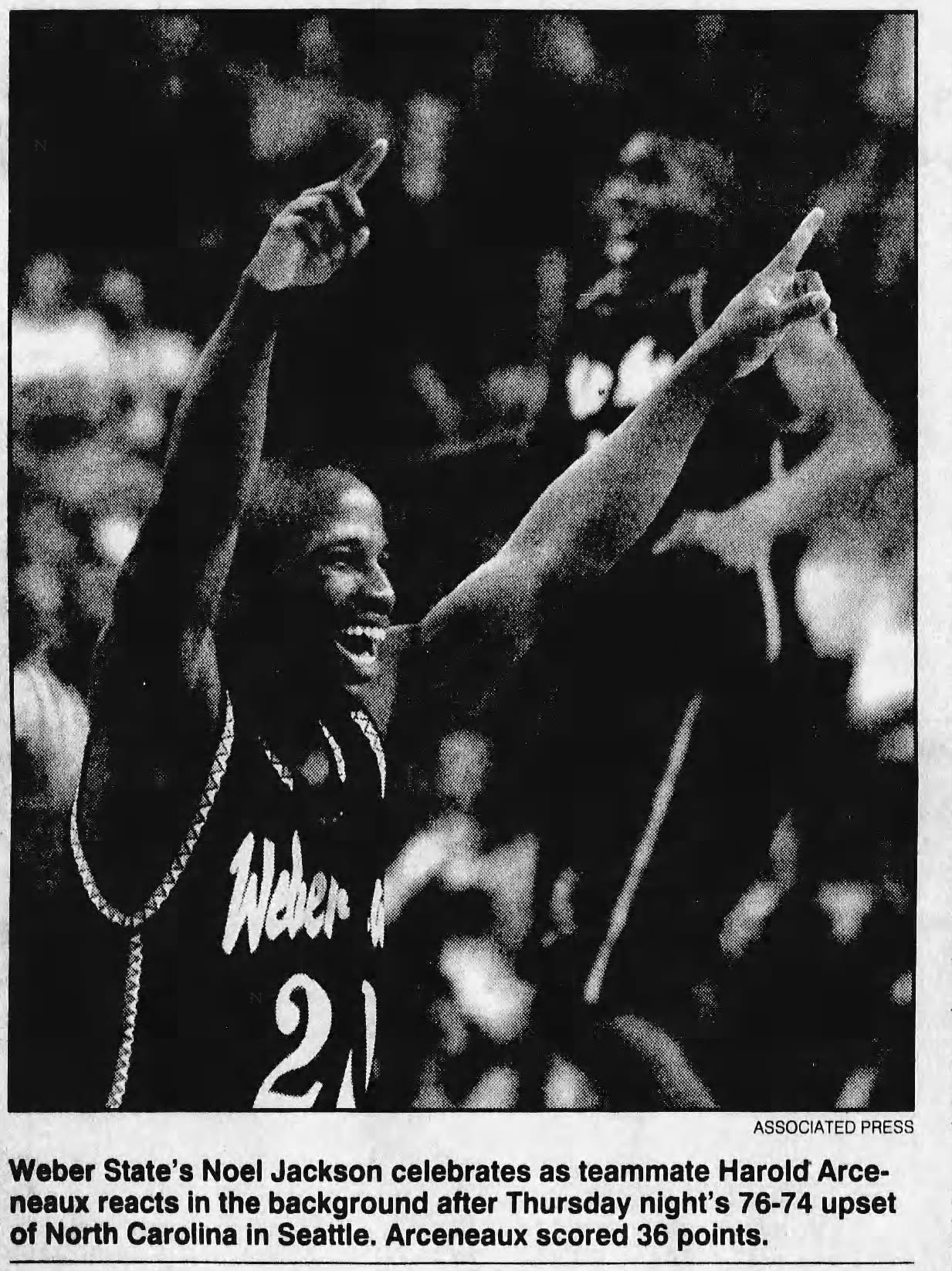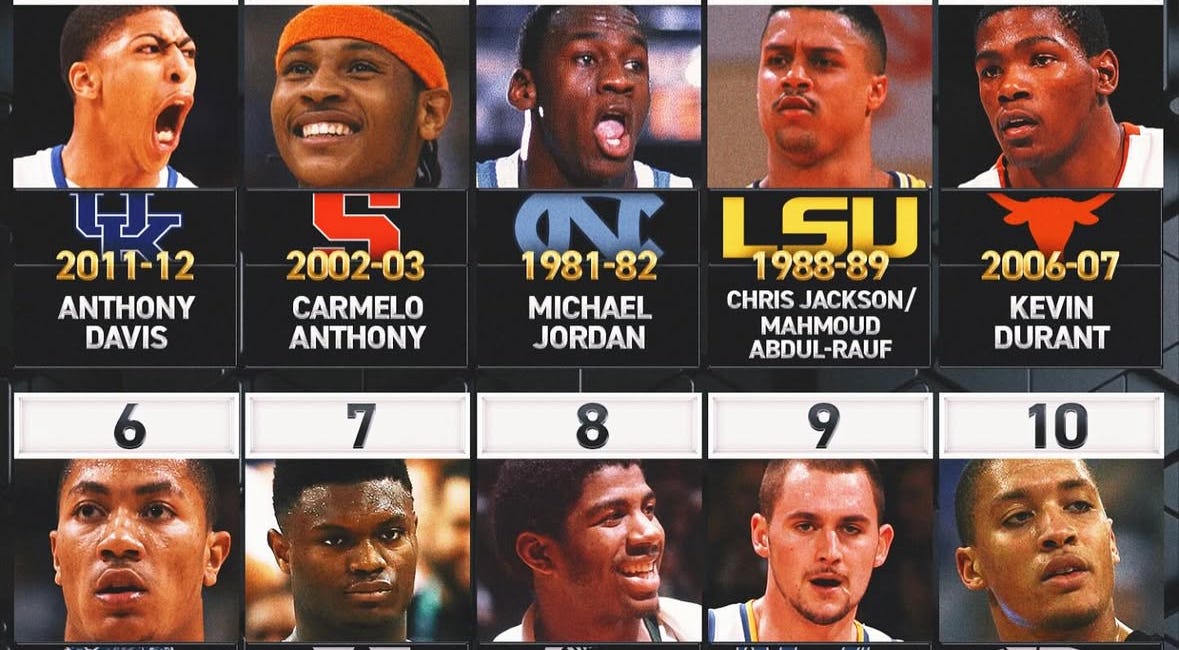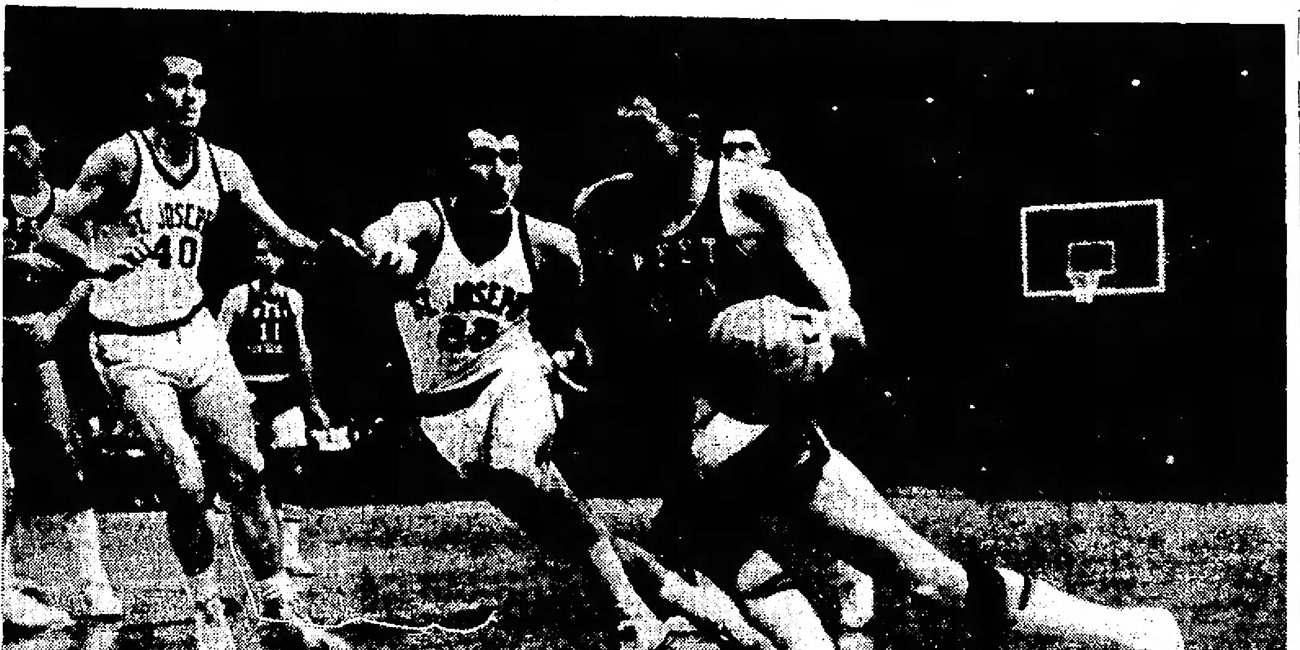Five For Friday: The Best March Madness Players to Not Reach The Sweet 16 (Other Than Shaq)
Five For Friday recognizes a quintet of March Madness standouts who shined despite never advancing past the first weekend.
Among the many aspects of March that make this month so special is the emergence of basketball legends. A single game can immortalize a player for generations, particularly as coverage of the NCAA Tournament has expanded from the 1980s to today.
In this edition of The Press Break’s Five for Friday, we celebrate such March Madness names from a particular favorite sub-genre of mine: NCAA Tournament standouts who never reached the Sweet 16.
A year ago, I spotlighted the king of this category, Shaquille O’Neal. His 1992 NCAA Tournament is transcendent and deserving of a retrospective all its own, which you can read below.
Madness Moments: The Best NCAA Tournament Player To Never Reach The Sweet 16
Eight players have combined for nine official triple-doubles in NCAA Tournament history. The second came in 1992 when Shaquille O’Neal shot 11-of-17 from the floor en route to 26 points; grabbed 13 rebounds; and blocked 11 shots.
Beyond Shaq, the following five are my choices for the best first-weekend players in March Madness history1.
Harold Arceneaux, Weber State
Aptly nicknamed “The Show,” Harold Arceneaux commanded the spotlight for one unforgettable weekend in 1999.
Among college basketball fans, the two-time Big Sky Player of the Year became a household name — and you better believe that includes the nickname. Harold “The Show” Arceneaux gained March Madness immortality when he lit up a North Carolina team just removed from back-to-back Final Four runs.
The 1998-1999 Tar Heels looked considerably different from the 1997 and 1998 Final Four rosters that featured Vince Carter and Antawn Jamison. But Ademola Okulaja, a starter on both of those teams, had developed into a reliable leader in a frontcourt that also featured Brendan Haywood.
Ed Cota had also returned and was averaging more than 10 points and seven assists per game. This North Carolina bunch won 24 games and finished ranked in the top 15 of the final AP Poll — and it had no answer for The Show.
Arceneaux shot 5-of-7 from 3-point range and finished with 36 points — 20 in the second half — to lead Weber State to a 76-74 win over the Tar Heels.
“Just the opportunity to play against North Carolina psyched me up a little bit,” Arceneaux told reporters following the win.
He stayed psyched in the next round, too, going for 32 points and nine rebounds vs. Florida. Weber State very nearly pulled off another upset, taking the Gators to overtime in an 82-74 loss.
Had the Wildcats won, it would have set up a Sweet 16 matchup between the No. 14 seed and 10th-seeded Gonzaga.
Hersey Hawkins, Bradley
Hersey Hawkins ranks among the greatest players in Missouri Valley Conference history, which also means he’s one of the greatest players in college basketball history, given the league’s lineage.
That he shined in the NCAA Tournament is thus no surprise, averaging 29 points per game across three contests. As a sophomore in 1986, Hawkins was one-half of a sensational backcourt with MVC Player of the Year Jim Les. The duo powered the Braves to 32 wins that season, their 32nd coming in an 83-65 romp of UTEP.
Hawkins scored 21 points, grabbed five rebounds, and dished four assists. He dropped another 22 points in the next round, a loss to eventual national champion Louisville, in which Cardinals freshman Pervis Ellison took a significant step toward his history-making postseason run with 16 points on 7-of-10 shooting from the floor and eight rebounds.
Top Tuesday 10 Takes The Bait: No Fox, Michael Jordan Did Not Have A Top 3 Freshman Season
Longtime, or even recent, return readers of The Press Break know I’m a fan of The Simpsons. So much of the series' initial decade or so offers up gags that apply as much to life in 2025 as they did when introduced three decades ago. One such relevant joke today, made in the
Hawkins’ output in the 1986 Tournament is one of those nagging "What Ifs," given he carved out his niche in the NBA as a dangerous 3-point specialist, and this was the last edition of March Madness without the 3-point arc.
Well, he got another go-around in the Big Dance with the 3-pointer in 1988 and closed out his AP Player of the Year-winning season in spectacular fashion. Hawkins shot 6-of-8 from long distance and finished with 44 points, matching Rod Thorn’s outpouring for West Virginia in 1963 in what remains today one of the 13 highest-scoring NCAA Tournament performances of all time.
March Madness Moments: Before He NBA Drew Boos, Rod Thorn Was A West Virginia College Hoops Treasure
For ‘90s kids like myself, the first word that comes to mind with regard to Rod Thorn is, *ahem* BOOOOOOOOOOO!
Hawkins complemented his explosive scoring performance with 10 rebounds, six assists, three steals, and two blocks, doing all he could to will Bradley past Auburn. The Braves fell short, 90-86, with Auburn’s Chris Morris countering Hawkins with 36 points and 12 rebounds.
Morris doesn’t qualify for this edition of Five for Friday by virtue of Auburn reaching the Sweet 16 in 1985 and Elite Eight in 1986 — and, in the latter, Morris had 17 points, nine rebounds, and four steals facing Louisville’s “Never Nervous” squad.
His showdown with Hawkins does deserve a shoutout, however. So does this being Auburn’s last NCAA Tournament until the great Cliff Ellis coached the 1999 Tigers to the Sweet 16.
Ja Morant, Murray State
In the 2024 NCAA Tournament, Illinois’ Marcus Domask joined an exclusive, albeit incomplete, club of nine March Madness participants to have officially* recorded triple-doubles.
It’s a group that includes the aforementioned Shaq, Draymond Green (twice!), and the most recent player to do so before Domask, Ja Morant.
As the 2019 NCAA Tournament approached, a groundswell began championing Morant as both a potential National Player of the Year and No. 1 overall pick in the NBA draft. Morant lost out on both fronts to Zion Williamson.
But Morant’s March that year did validate his case. Starting with Murray State’s run to the Ohio Valley Conference Tournament championship, Morant guided the Racers through a hard-fought semifinal with Jacksonville State with 29 points, eight assists, and six rebounds.
He followed that with an OVC Championship Game for the ages, dropping 36 points, seven rebounds, and three assists on rival Belmont.
And that was only a warmup for Morant’s 17-point, 16-assist, and 11-rebound effort as Murray State scored its sixth-ever NCAA Tournament win.
The Racers bowed out to a good Florida State team in the next round, but Morant went out with 28 points, shot 5-of-6 from 3-point range, and had five rebounds, four assists, two steals, and a block.
Steve Nash, Santa Clara
A baby-faced Steve Nash first appeared on the national basketball stage in 1993, as a freshman at Santa Clara, with a huge performance off the bench in the Broncos’ 64-61 win over Arizona.
Nash helped fuel just the second No. 15-over-No. 2 upset in NCAA Tournament history with 10 points, seven rebounds, and four assists. An especially noteworthy element to Nash’s all-around vital performance is that he was also responsible for taking Arizona’s standout backcourt duo of Khalid Reeves and Damon Stoudamire out of the game, helping draw four fouls apiece against them.
Nash scored eight of his 10 points at the free-throw line as a result. What’s more, Nash may have had a reputation in the NBA as a sub-par defender — not unwarranted — but he contributed to Santa Clara holding Stoudamire to 0-of-7 shooting in the 64-61 Broncos win.
Nash shot 1-of-9 from the floor and finished with just three points in the next round vs. Michigan’s Fab Five, but returned to March Madness in both 1995 and 1996 as Santa Clara’s clear leader and an emerging NBA prospect.
He shot 4-of-9 from 3-point range in a 22-point, seven-rebound showing in Santa Clara’s first-round loss to Mississippi State in 1995, then put on a clinic the following year against Maryland.
His ability to get to the foul line again played a huge part in a Broncos win, this time going 17-of-18 at the charity stripe to contribute to his 28 points. This was also perhaps the best foreshadowing of Nash’s NBA career, as he doled out 12 assists to 91 points in a 12-point Santa Clara win.
Nash’s Santa Clara career ended in a blowout loss to Kansas, which had the core lineup central to the 1996-97 Jayhawks going down as one of the most shocking upset victims in March Madness history. Nash scored only seven points but had eight rebounds, six assists, and three steals.
Marvin O’Connor, Saint Joseph’s
While I certainly approach any historical ranking here on The Press Break as subjectively as possible — which means backing up points with tangible support — sometimes I just have to consider vibes. And in 2001, no player brought better vibes than Marvin O’Connor.
O’Connor was part of a Saint Joseph’s perimeter rotation alongside then-freshman Jameer Nelson. The signs Nelson would leave Saint Joe’s three years later firmly established as one of the best college point guards ever were evident this season, including a near-triple-double in the Hawks’ Round of 32 matchup with Stanford.
As impressive as Nelson’s 14-point, nine-rebound, and nine-assist effort against the ACC2 powerhouse Cardinal was, however, Marvin O’Connor commanded the spotlight.
O’Connor shot an incredible 15-of-20 from the floor, going 5-of-10 from beyond the arc and a ridiculous 10-of-10 inside it. Opposite All-American Casey Jacobsen and playing with a future national Player of the Year in Nelson, O’Connor was the best player on the floor that day, going for 37 points against the No. 1 seed Stanford.
The Cardinal got 21 from Jacobsen and 22 from Jason Collins to counter O’Connor’s onslaught in a 90-83 final. Still, O’Connor’s performance remains among the most impressive one-man shows I’ve seen in my time watching March Madness, and it was a strong follow-up to his 21-point effort in the first round vs. Georgia Tech.
From 1985 on, after the NCAA Tournament expanded to 64 teams.
Vomit. I felt queasy even writing it in jest.

